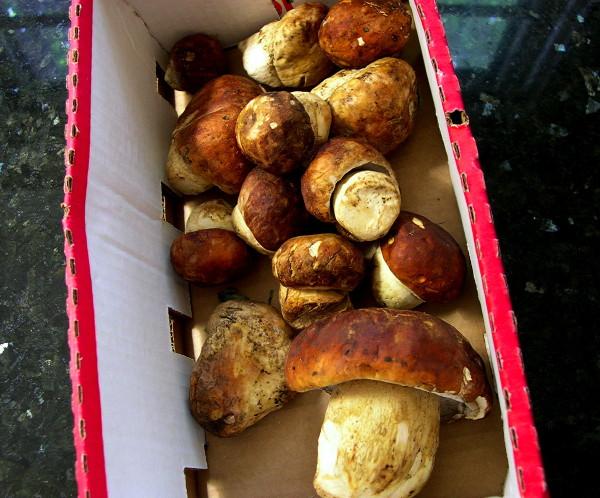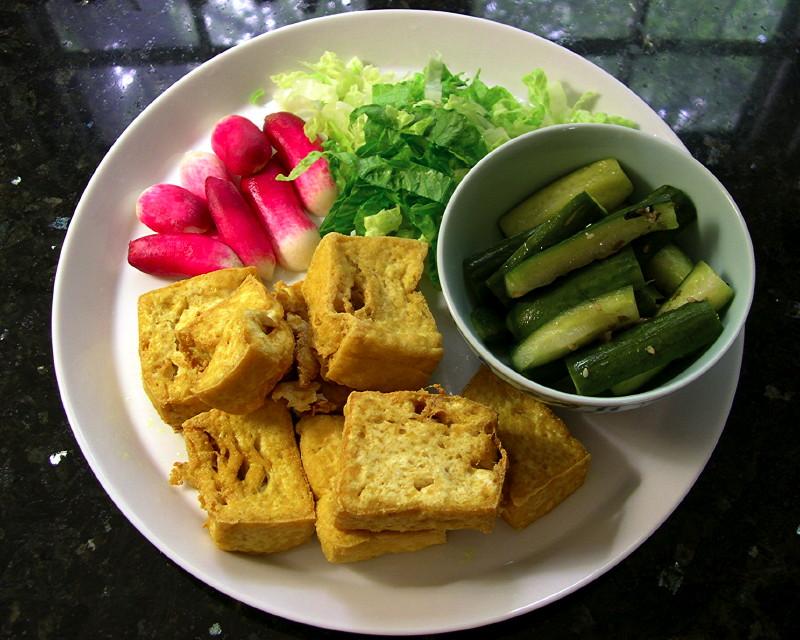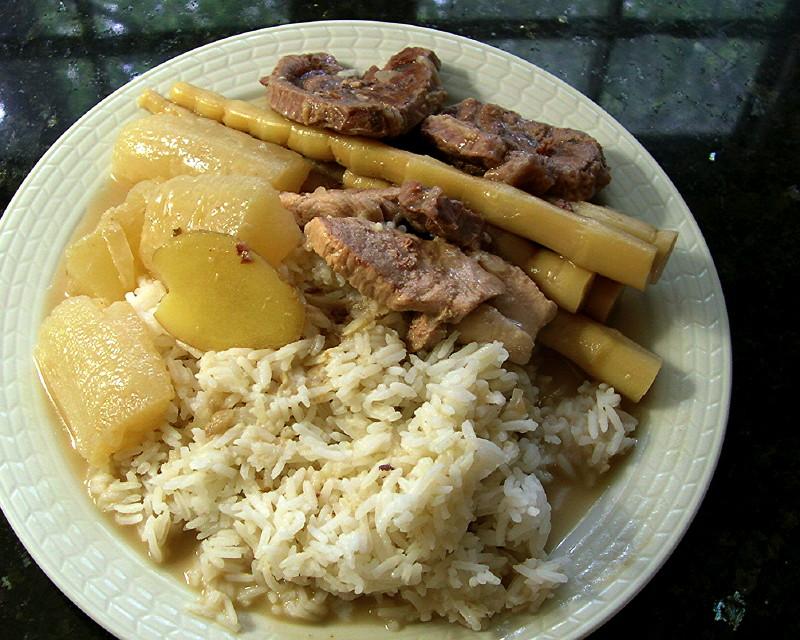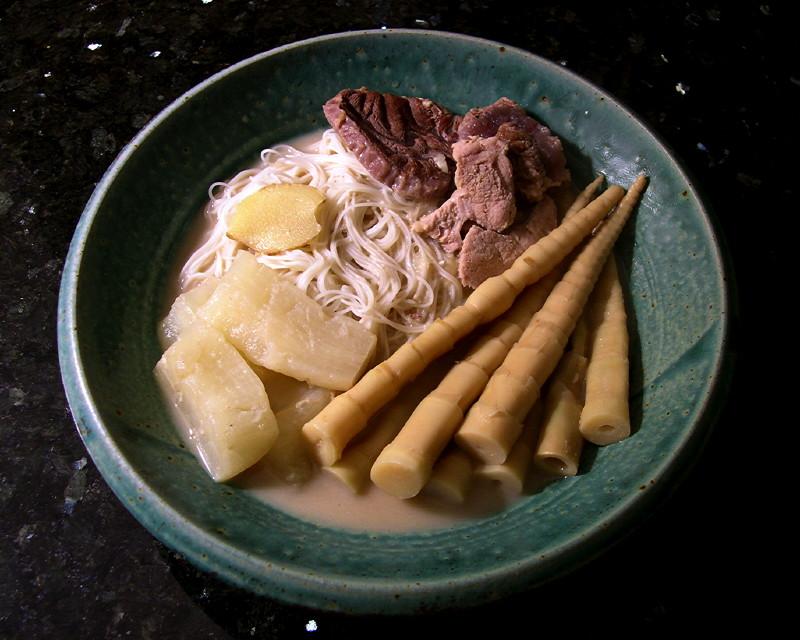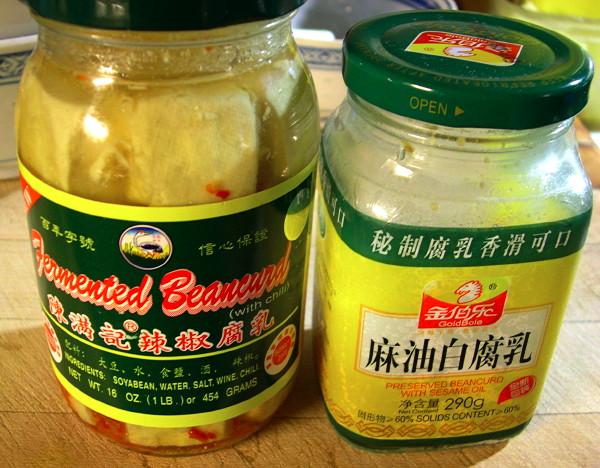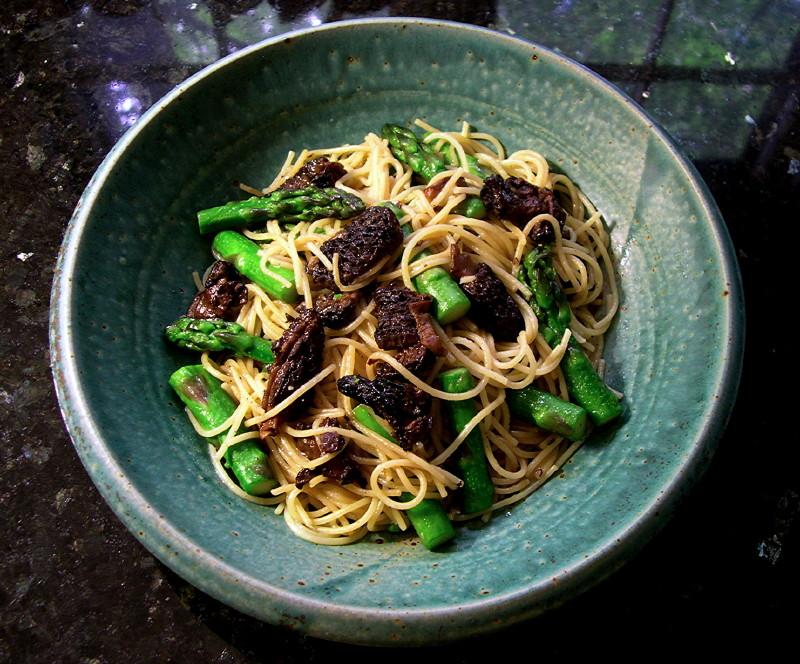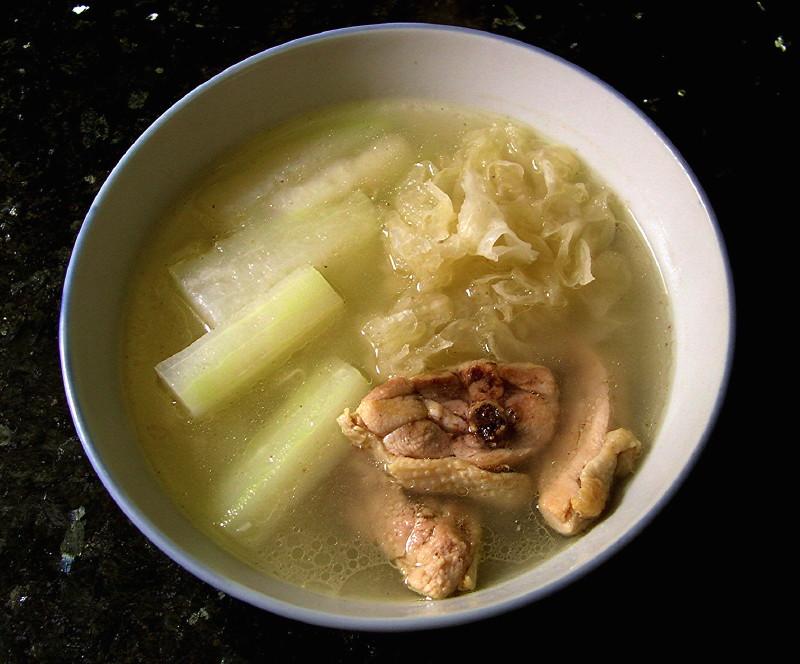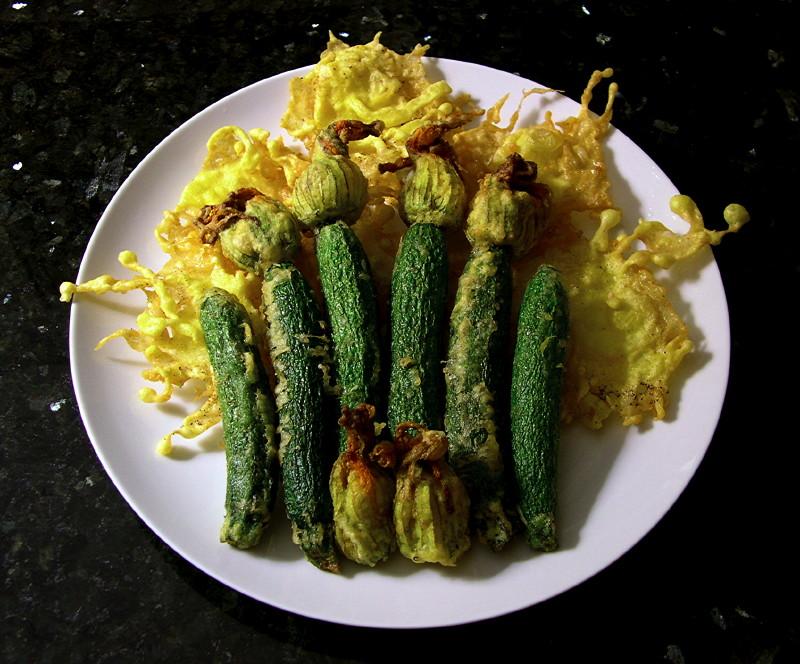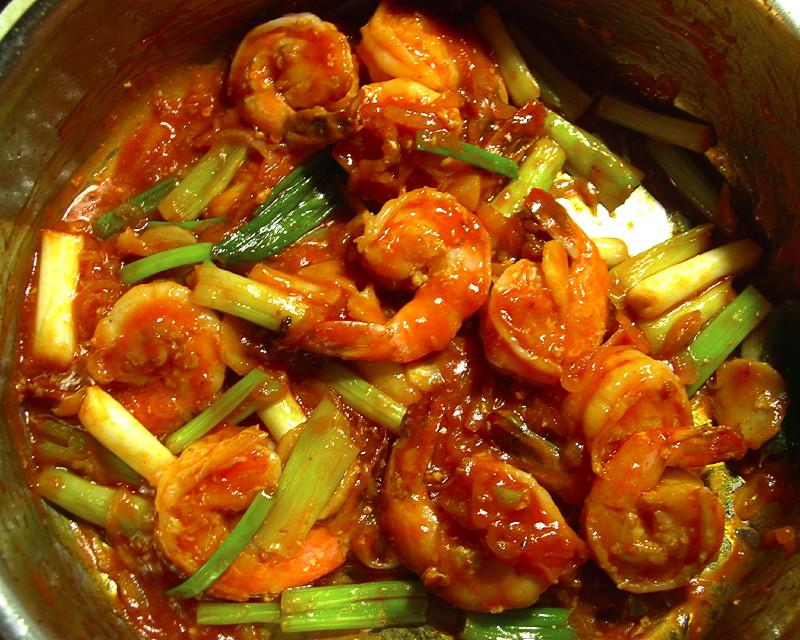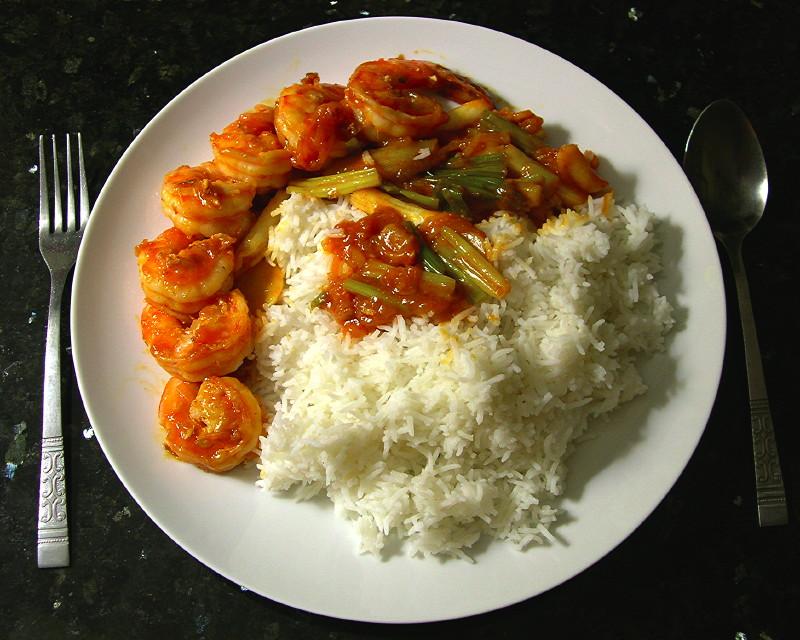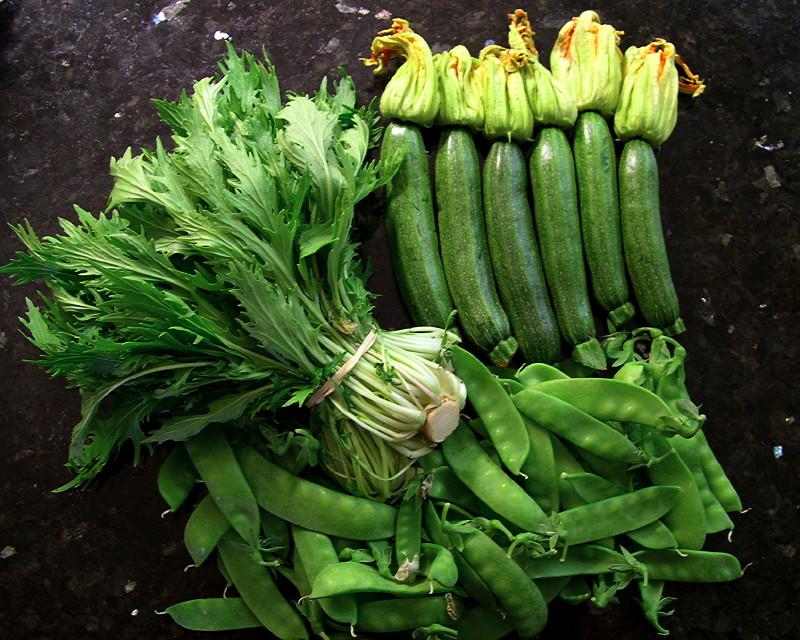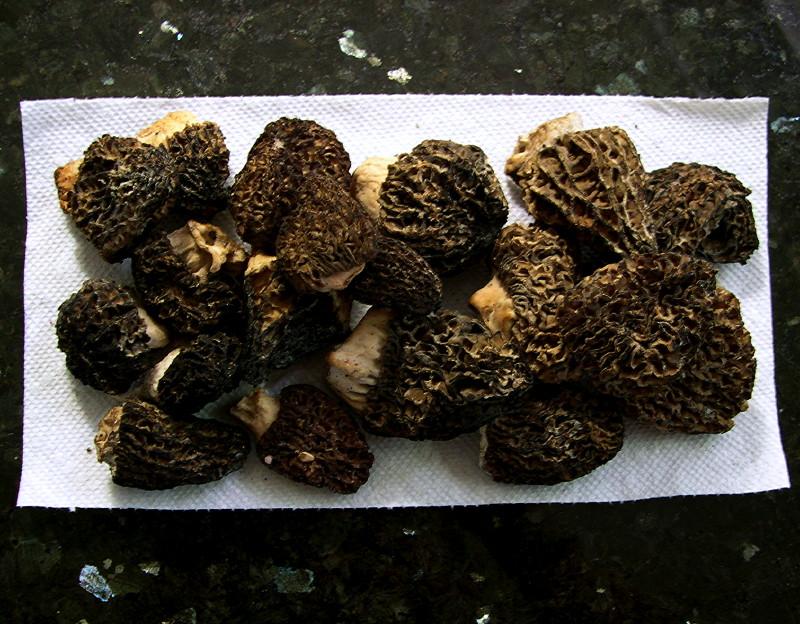-
Posts
3,810 -
Joined
-
Last visited
Content Type
Profiles
Forums
Store
Help Articles
Everything posted by huiray
-
Shopping Fri-Sat. Asia Mart: Rice bran oil, peanut oil; frozen fish balls, tubular “grilled/baked” fish cakes (chikuwa), Chinese crullers, fresh yellow-skin chicken, fresh duck wings, fresh pork hock slices; two types of whole-plant salted/preserved mustard (mui choy), pickled mustard (typical type made w/ kai choy); kangkong, Thai basil, red-streaked amaranth (yin choy), Shanghai choy sum, Opo squash, scallions, coriander leaves, Chinese chive flower buds, fresh lotus roots, limes, garlic, shallots; deep-fried soy puffs, soft & firm tofu, fresh skinny wonton noodles, Fuzhou-type wheat noodles (min sin) [Hung Ming], skinny rice noodles (mei fun) [Tiger]. Sakura Mart: Hon-mirin [Takara], jozo-mirin [Morita], ryori-shu [Morita], large dried shrimp [鴻昌隆], mutenka shiro miso [Miyasaka Jozo Co.], Yamabuki miso (JFC International, importers). BRFM: Fresh strawberries, spicy mustard greens, broccolini, Western chives, broccoli rabe, young candy onions. Annabelle’s Garden: Spring porcini (Boletus rex-veris), from Oregon.
-
Looks like a riff on a popular street food from Tianjin. Here's one article in English reporting on a California Bay Area restaurant's offering of it. A version of this in Cantonese-style dim-sum is crullers wrapped in rice crepe and steamed.
-
• Deep-fried firm tofu chunks, w/ French Breakfast radishes, pickled cucumbers, chopped romaine lettuce. • Leftover stewed/braised beef shins & pork w/ bamboo shoots & daikon, with white rice.
-
robie - yes, I would say. The generic name for the stuff is "腐乳", which in Cantonese would be pronounced in a way that "fuyu" would approximate. (The Yale Cantonese for "腐乳" would be fu6 yu5; although when I was growing up I learned of the stuff as something closer to "fu yuee")
-
Well, for myself (again, my personal experience) using peanut oil for deep frying does indeed stink up the place. Yes, I've used "refined" peanut oil in this regard before too. Canola/Corn/vegetable oil does not, even if they *do* leave a "presence" of their use but which, *to me*, is not objectionable.
-
Heh. I do that too, but only after I cook the chicken. I must say I never even thought that the wishbone posed a choking hazard, let alone for LOTS OF FOLKS. I find that just bizarre. It seems curious to me how many, many folks in the West/USA just simply cannot handle bones in their food.
-
Beef shin & pork braised/stewed w/ fermented/preserved beancurd, bamboo shoots & daikon. Generous sliced ginger sautéed in corn oil. Beef shin slices browned in the oil. A bit of Redmond salt added. Tossed w/ a mixture of chillied fermented beancurd and preserved beancurd in sesame oil (see below), mashing up the beancurd blocks. Some of the liquid from the jars of tofu poured in as well. Sufficient water added. Brought to a simmer for a short while. Bamboo shoots (pre-simmered in salted water) added in, plus about a (big) half-head's worth of garlic, smashed, deskinned. Simmered for a while. Pork chunks (from a bone-in pork chop) added in, followed shortly after by daikon chunks (skinned). Seasoning adjusted. Simmered till done. Eaten w/ Fuzhou-type hand-made thin wheat noodles (this one). Pic of the two types of preserved/fermented beancurd I used:
-
Black morels sautéed w/ butter & Redmond salt, asparagus added in, just-cooked Fedelini [De Cecco] went in plus a splash of the pasta water & some Alziari EV olive oil. Tossed in the pan still on heat. Served immediately.
-
The term "Surimi" covers much more than those surface-orange-dyed "sticks" of imitation crab or lobster one might think of in the US. Both fish balls and fish cakes would be forms of fish surimi. (Pork & beef surimi have also been around for a long, long time - as "pork balls" and "beef balls") http://en.wikipedia.org/wiki/Kamaboko http://en.wikipedia.org/wiki/Surimi http://cook13.com/n5-41842-What_is_Surimi_and_What_is_it_Used_for http://en.wikipedia.org/wiki/Fish_ball https://www.google.com/search?q=fish+balls&source=lnms&tbm=isch&sa=X&ei=vSiOU-C4A42nyAT-vYLQAg&ved=0CAgQ_AUoAQ&biw=1147&bih=924 http://en.wikipedia.org/wiki/Fish_slice https://www.google.com/search?q=chinese+fish+cakes&tbm=isch&tbo=u&source=univ&sa=X&ei=6CiOU_bUCM-yyATFj4KwDQ&ved=0CCEQsAQ A couple uses I've made of "surimi"/fish cakes I've posted on here at eG. There are more. http://forums.egullet.org/topic/143989-lunch-whatd-ya-have-2012%E2%80%932014/page-12?p=1925164#entry1925164 (scroll down to the 7th sub-entry) http://forums.egullet.org/topic/143989-lunch-whatd-ya-have-2012%E2%80%932014/page-7?p=1911234#entry1911234 A batch of "Yong Tau Foo" (various things stuffed with fish paste (i.e. surimi)) I made, shown here on eG: http://forums.egullet.org/topic/143989-lunch-whatd-ya-have-2012%E2%80%932014/page-4?p=1906358#entry1906358 A dish called "lo siu ping on" made with fish paste (=surimi) and tofu I posted about on eG: http://forums.egullet.org/topic/146914-lunch-whatd-ya-have-2014%E2%80%93/page-6?p=1961771#entry1961771 I've used fish balls (as well as pork balls & beef balls) in various soups and preparations shown here too. eGullet thread on kamaboko (which is made from surimi): http://forums.egullet.org/topic/27011-kamaboko/
-
-
There are dozens and dozens of different brands and variations of "mei fun", far more than three or four or ten, with different ones ranging from every country in E and SE Asia available, wide to thin to slippery to coarse to everything in between, some suitable with a soak in hot water, some requiring an actual simmer in hot water or it might be a little too "hard". Consider picking up more than just another one to make it a "third one" in your development of your own recipe for this artificial dish. Why not try it for your own recipe with wheat noodles, too, maybe with such things as misua? Which, in turn, have various variations too. (Actually, I think it might be an interesting idea to use the more "robust" versions of misua/mee sua (like certain ones from Taiwan) for this non-Singaporean dish)
-
I assume you are asking about the noodle dish of that name (a.k.a. "Singapore Mei Fun") in American-Chinese cuisine (also UK and some parts of Europe plus other British-speaking countries) and not about a noodle dish you might actually get in Singapore; nor the one by that name in Hong Kong? I trust you are aware that this dish in the form widely known in the US is not known in Singapore (except maybe in a few places where it has been "imported" as a novelty item). There are many different noodle dishes in Singapore but the one which might resemble this dish and that only vaguely is the "breakfast noodles" dish (NO CURRY POWDER) which is commonly whipped up in several variations by hawkers there. Have you tried the recipes found in a Google search? Or in this search....Or this recipe, or this? One of the blogs referenced in one of the google searches is useful for embedding various recipes within the discussion... The variations are many and there is no "perfect recipe" let alone a "traditional recipe" (since it really is a sort of dish invented by Cantonese cooks outside of Singapore) and ultimately it will depend solely on your own preferences, so you will need to play with it - and what YOU like may not be liked by others.
-
Deep-fried small zucchini w/ ricotta-stuffed blossoms. Batter: rice flour, local free-range egg, Redmond's salt, olive oil, water.
-
I posted upthread about which oils I use for deep frying, but I'll repeat them here: corn oil, vegetable oil, canola oil. And again, I do not find/smell anything wrong w/ canola oil. Sorry, but to me peanut oil and olive oil are NOT neutral in taste or smell especially for deep frying at suitable temperatures. I use peanut oil on occasion for stir-frying and other Chinese-type cookery and the taste the food acquires is pleasant but the smell of hot peanut oil is very noticeable to me.
-
Anna N, you're welcome. Hope you like it when you do it if you do it.
-
Y'know, I think catfish would work well with that tomato ketchup sauce. In fact, I think there *is* already such a rendition or version of this...?
-
I think it would work well in a way, but the taste of the fish *will* be masked, if one wishes to savor the fish as the primary taste. I would still do it, but consider the fish to be a canvas on which you hang everything else. Does that make sense? "Sweet & Sour Fish" is a dish in a related vein, where the use of a delicate-tasting fish where the subtlety of the FISH itself is supposed to be the prized feature would not be the best choice. ETA: One could dial back the amount of ketchup - use, say, "one squeeze" :-) - and that might be helpful with a mild-tasting firm white fish, adjusting the seasoning as needed w/ sea salt/fleur de sel/a squeeze of lime/other stuff if needed.
-
Sure. This one is modeled after the simple recipe here. I had also previously "adjusted" that same recipe here. • Large wild-caught Atlantic prawns/shrimp¶ (slightly over ½ lb), shelled & deveined but tails left on; marinated/tossed w/ 1 egg white, ~½ tsp sugar, ~½ tsp salt, ~1½ -2 tbsp light soy sauce [i used Pearl River Superior]. Set aside for 20-30 minutes while doing the other stuff. • Two medium shallots, peeled, thinly sliced. Maybe a 1 inch length of fresh ginger, skinned, thinly sliced into thin coins. Four or five large scallions trimmed, washed, sliced into 1½-2 inch pieces. White rice was cooked (stovetop). • The prawn shells/legs were simmered on low heat in a saucepan w/ a little salt, a bit of oil and some water (partly covered), tossing w/ a spatula, till it was almost dry and beginning to "crisp" and get crispy bits.§ A small amount of water was added, everything scraped around and simmered (some tossing) for a short while. The stock was poured off, squeezing the shells w/ the spatula. Yield about a half of a small-ish rice bowl's worth. Shells dumped. • The prawns (fished from the marinade) were sautéed in the same pan w/ some fresh oil, till barely done, then reserved. The crispy bits were scraped off and added to the reserved prawns. (The marinade left behind in the marinating bowl went down the drain. ;-) ) • A bit more oil was added, the sliced shallots & ginger went in & sautéed till the shallots were just beginning to acquire a brown edge. Three very healthy squeezes of Heinz "Simply Heinz" tomato ketchup went in and the mix was sautéed on medium-high heat till the mix/ketchup was just beginning to brown and turn dry-ish, then the reserved prawn stock poured in and the mixture stirred well still on medium-high heat for a minute or so. • The reserved prawns and scrapings then went in and were tossed around, followed by the trimmed scallions. Everything was stirred/tossed till warmed/heated through plus a wee, wee bit more. Serve. ¶"Prawn/Shrimp" is interchangeable in the culinary sense, of course, and "shrimp" is more widely used in the US. Technically these were prawns, with the 2nd shell segment overlapping only the 3rd shell segment on the abdomen. § I've done this w/ the heads as well before for this dish, where the tomalley gave a big additional "oomph" (and color) to the shrimpy taste.
-
-
So far today: Broad Ripple Farmers' Market: Black morels, farm eggs, small zucchinis with the blossoms attached, mizuna, snow peas. The Fresh Market: Wild-caught Atlantic shrimp, pine nuts, pasta, salt (Maldon, Baleine, Redmond**). **I've never tried this before, let's see if the residual grit in this one becomes an issue. Tastes nice, though.
-
I didn't miss the point. You missed the intention of my response. You said you thought the characters for the 1st dish were 炸春卷, I merely commented that they did seem to be. You could only make out 玉米 in the Chinese name for that "broccoli" dish and commented that you presumed the rest of it was appropriate, I offered what seemed to be the 1st and 5th characters - so that might help in your confirmation of the name in Chinese. That was all. Of course the English translations are wrong, I did not dispute that. You might want to check your attitude.
-
You asked for suggestions. I offered one. OK, so it isn't what I suggested. No need to sigh and roll one's eyes about it. ;-)
-
That recipe you translated (readily found from a Google search) does translate out as you show - but other recipes translate just fine, with "feuilles de pêcher" being rendered as "peach leaves" and "eau-de-vie" being rendered as "brandy" (true, somewhat generic there). Typing in "feuilles de pêcher mignon" into the dialog box in Google Translate Tools gives "peach leaves cute" (better than "cute fish", at least) with the alternatives for "mignon" being "pretty", "lovely" or "nice" from the drop-down contextual menu when one clicks on "cute".



